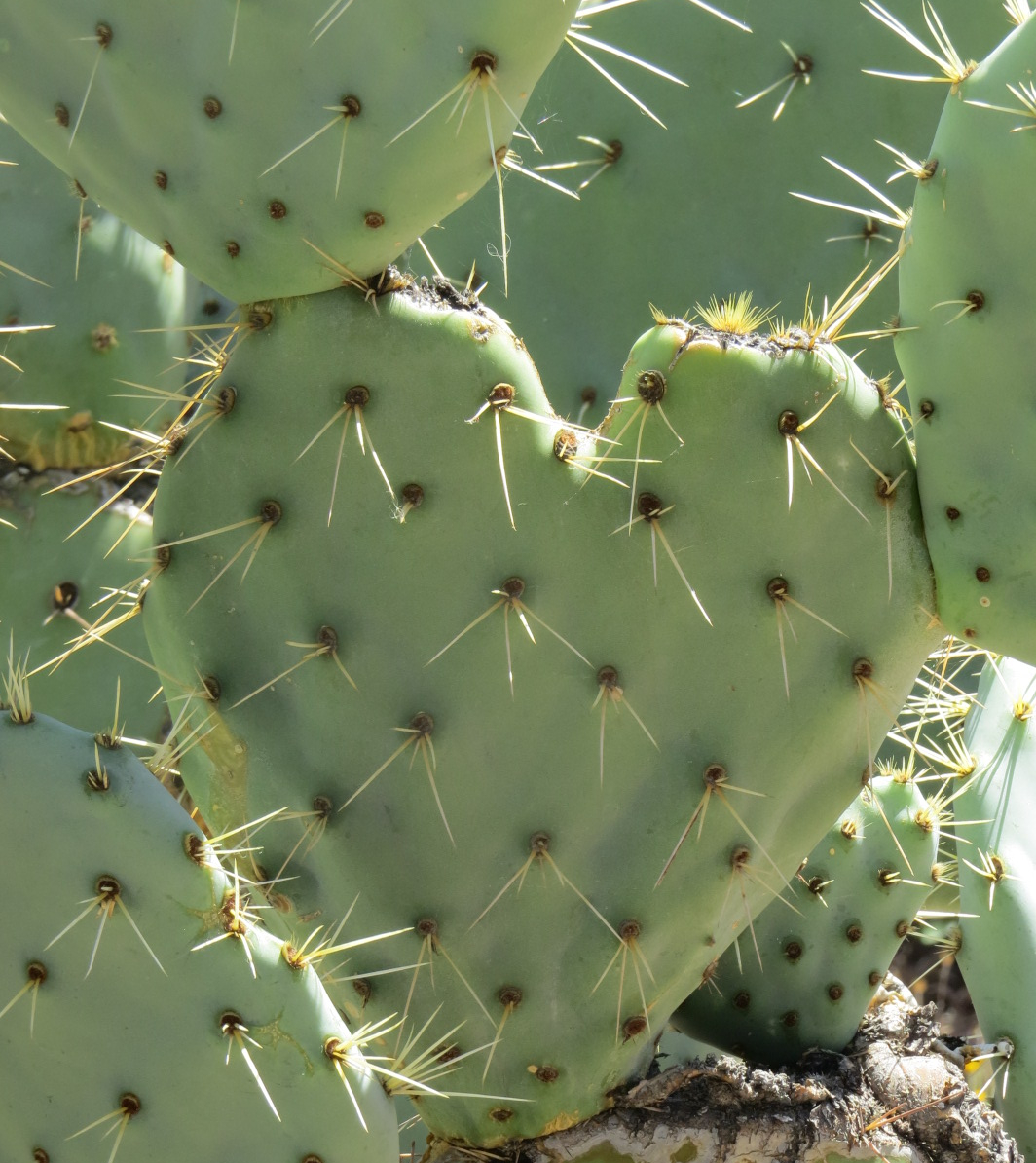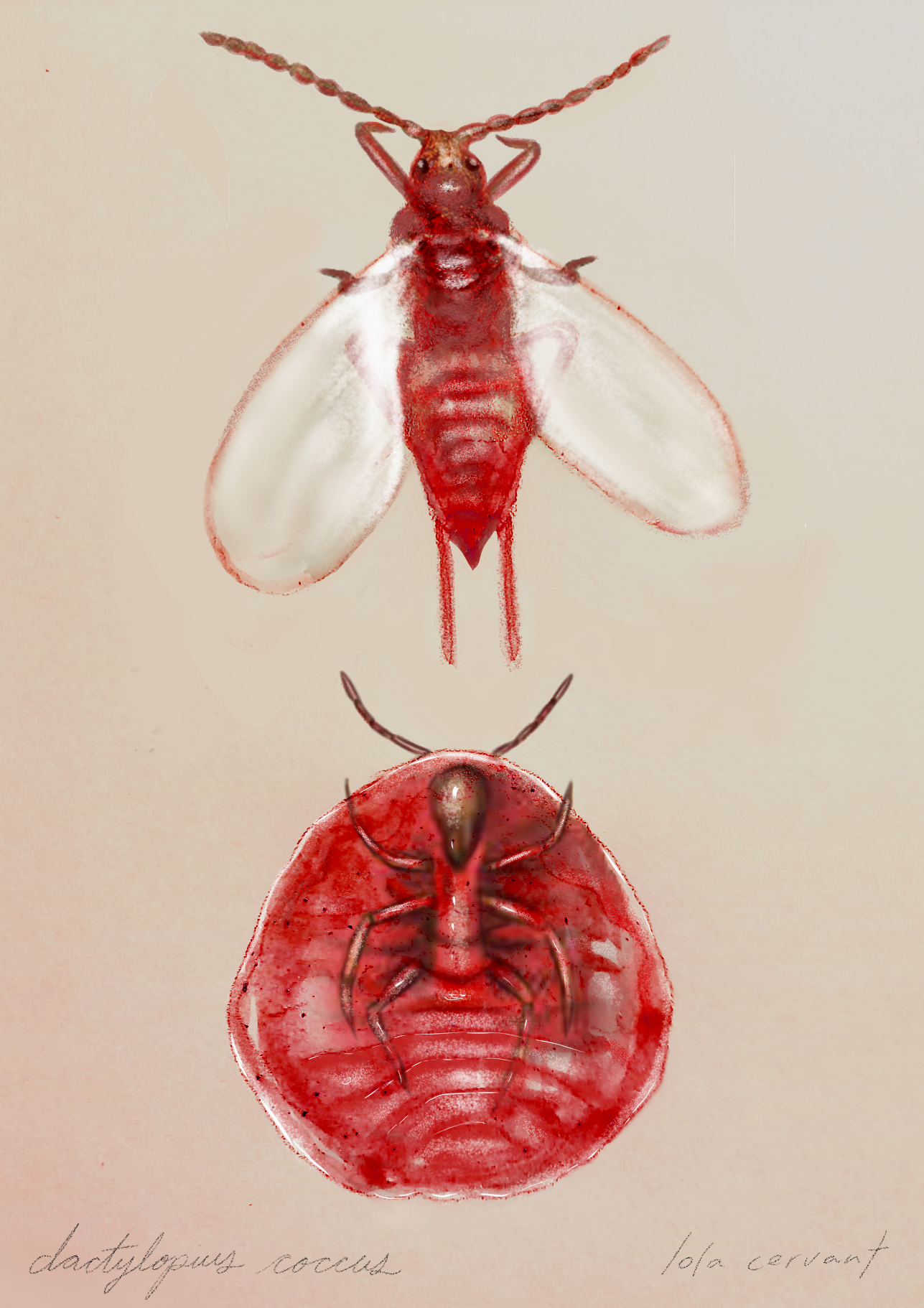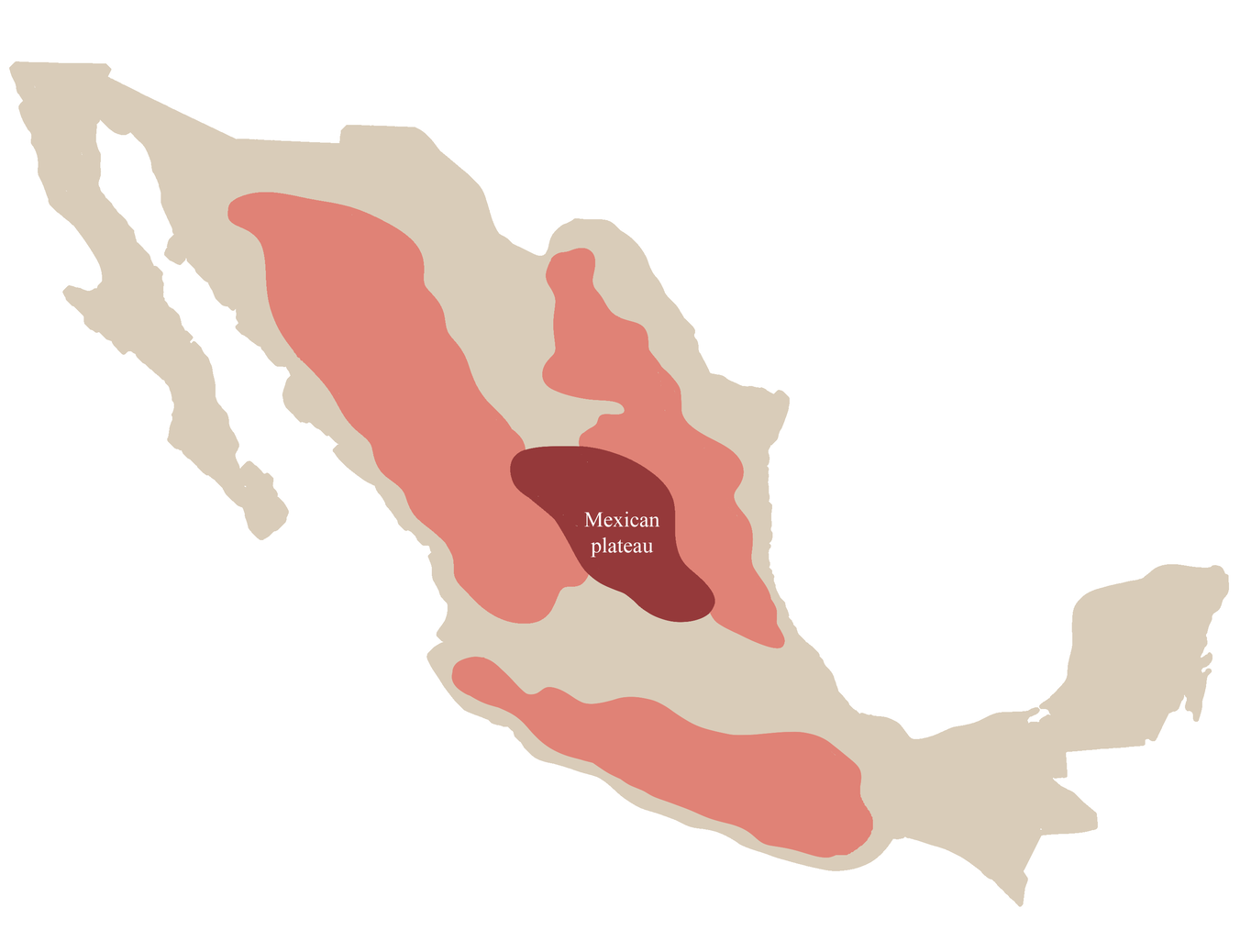Fig. 5 Map of the mexican plateau region, known in spanish as Altiplano Potosino, surrounded by mountainous ranges East Sierra Madre, West Sierra Madre and South Sierra Madre. Digital drawing, Lola Cervant 2023.
Fig 4. A close-up photograph of a cactus pad of Opuntia Ficus-Indica, Opuntia Cochenille at Cervantes family cottage in the mexican plateau. Photograph, Cervantes 2017
Cochineal was the colour of oppression. Members of Indigenous cultures aimed to enhance their wealth and privilege but were exploited for centuries. According to Dussel and MacEoin (1991, p. 443), this period was described as an “encounter of two cultures”, but nowadays, increasingly more people consider that the Spanish Empire tore the Indigenous cultures apart. Also, Dussel and MacEoin (1991) argued that “Europeans deny their own responsibility for a domination that continues to be invisibly exercised” (p. 446), hence history should be more reflected.
It is impossible to erase the legacy of oppression inherited with the cochineal trade in Europe; however, the decolonisation process includes revaluing Indigenous knowledge and revitalising crafting cultures. In the light of contemporary art and research, it is possible to reconfigure and give new meanings to this valuable insect. There is research on design processes where content from a local cultural heritage has been adopted in product development in a conscious, responsible and inclusive manner (Suib et al., 2020). Design research that focuses on cultural heritage can enhance understanding of the dynamics of sustaining knowledge from the past, with an aspiration to integrate it into the cultures of current and future generations.
From the first encounter with cochineal to the quest of its story
The cochineal bug (figure 3), known in Spanish as ‘grana cochinilla’ and ‘cochinilla del carmín’ (eng.: cochineal of the carmine), refers to the carminic acid in it. In the language of origin, Mixteco, the name for cochineal is “ndukun”, which means ‘blood insect’. The insect, endemic to the American continent (Britton & Rose, 1963), is also referred to by the name of ‘nocheztli’ in the Náhuatl language, spoken in the past by Aztec people. The insect Dactylopius coccus, its Latin name, is a parasitic Hemiptera belonging to the Dactylopiidae family, whose hosts are the cacti of the genus Opuntia, Opuntia ficus-indica (figure 4). The first description was in 1753 by Carl Linnaeus as Cactus Cochenillifera, and it referred to the insect that inhabits cacti (Britton & Rose, 1963).The cacti are known as ‘nopales’ in Spanish and commonly as ‘prickly pear’ in English. The species is native only to Mexico but is now settled in many parts the world (Hunt et al., 2006; Arreola et al., 2017).
Carminic acid, which is extracted from the female cochineal, has been used as a fabric dye for centuries by the Indigenous Mexica people and other Mesoamerican cultures. Cochineal tincture has been found in murals dating from 100 years before the Common Era (Pérez-Sandi & Becerra, 2001). Its prehistoric use was to dye objects, food, wood, textiles, cotton and inks for Mesoamerican códices (books of Indigenous pictoric traditions) (Britton & Rose, 1963). Today, cochineal is used in food colouring and cosmetics. Its extract is a natural colorant with high stability, endurance to high temperatures, low environmental impact but very high price (Campos-Juárez, 2019).
The current distribution of cochineal and its hosts includes at least 14 states of Mexico, and it is well known to be produced in many cities in Mexico, including the hometown of the first author, Cervantes. In the state of Oaxaca (Chavez Moreno et al., 2010), there is a museum is dedicated to the cochineal insect.
In these places, the insect grows, lives, reproduces and dies on the Opuntia plant for 90 to 128 days in locally owned greenhouses. When the cochineal’s life cycle ends, insects can be brushed from the cactus pad and stored (Chavez Moreno et al., 2010).
Mesoamerican people were able to obtain shades that varied between pink, purple, ocre and scarlet by mixing the cochineal with other materials such as alum, salts, caparrosa, orchid gum, citric acid, gypsum, vinegar and ashes of the tezhuate plant (Miconia argentea) (Del Río Dueñas 2006; Domenici et al., 2017).
Research related to the economic impact of cochineal in colonial times indicates that, when the Spanish returned from Mexico in the 1520s, they brought samples of a dye that produced the most intense and stunning red that Europe had ever seen (Phipps et al., 2010). King Carlos V, became aware of the economic benefits that the cochineal pigment trade in Europe and part of Asia would bring to spaniards (Salinas, 2018), so he ordered an investigation of its production. According to Phipps (2010), ship log documents from the 17th-century illustrate how thousands of tonnes of cochineal insects were shipped from Mexico to Spain. Each ship transported about 200–300 arrobas of fine cochineal powder made from the dried insect (one arroba weighed approximately 11.5 kilograms). At the end of that century, more than nine tonnes of cochineal powder were exported on each trip to Andalusian ports. During the same period, cochineal and prickly pear were introduced to Spain for the first time (Gov. of Mexico, General Archives, 2022).
Cochineal was a profitable export from Mexico, comparable to gold and silver, creating trading networks for global demand (Salinas, 2018). Both Spanish and Indigenous people profited from the market, but the earnings were inferior on the Indigenous side. Indigenous communities in Mexico worked hard to supply Europeans (Salinas, 2018; Miller, 2022), while cochineal made its way to the most privileged people in Europe, reaching the artistic spheres. Artists such as Tiziano, Velázquez, Rembrandt, Gauguin, Renoir, Rubens and Caravaggio used cochineal pigments in their paintings depicting high rank and aristocrats, kings, nobles and clergy wearing red fabrics (Espallargas, 2018; Van Houten Maldonado, 2018).
When I was a school-age child, we used to celebrate the 12th of October as the “day of the discovery of America”. I made drawings of the three Spanish caravels where Christoper Columbus travelled to America, and it was taught in schools as an achievement from a triumphalist perspective. In recent decades, there has been a process of resignification, and nowadays, the 12th of October is a day that people in Latin America commemorate as the Day of Indigenous Resilience as a way of vindicating the period of colonisation in America. (Cervantes, research diary)
My first memory with the cochineal insect was in my childhood, at my grandparent’s countryside home in the semidesert of the Mexican plateau (figure 5) in San Luis Potosi, a region known for its abundance of cacti and cochineal harvest since pre-Hispanic times. This is where I came across a cluster of them on the surface of a prickly pear and heard a relative say to me, ‘If you squeeze one of those, you will get a red stain on your clothes’. (Cervantes, research diary)





